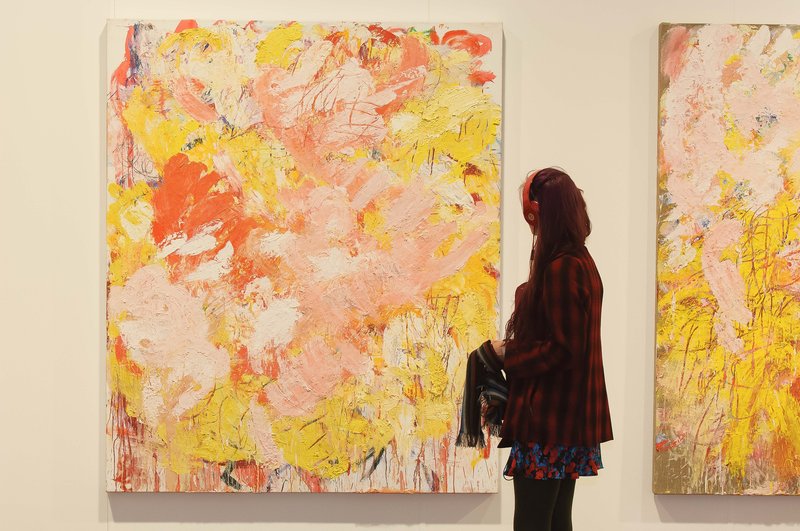The Melbourne Season for Art Fairs
Eve Sullivan, the new Executive Editor of Artlink Magazine, talks about the proliferation of art fairs and their sign of a healthy and growing market.
Eve Sullivan, the new Executive Editor of Artlink Magazine, talks about the proliferation of art fairs and their sign of a healthy and growing market.

Image courtesy of Melbourne Art Fair.
Are art fairs getting too big for their booths? With its heady line-up of art talks and walks, forums and panels discussions, performances, film screenings and off-site events, you might be forgiven for thinking that the Melbourne Art Fair has all but eclipsed the business of selling art. Under the new management of Art Fairs Australia, led by Director Barry Keldoulis, in association with the Melbourne Art Foundation, this year's program is the biggest yet. Leading the way with the yet-to-be-unveiled annual public commission, the 2014 program features conversations, tours and walk-throughs of the 70-plus participating galleries and project spaces, and includes curated exhibitions, video screenings, performance interventions and an expansive program of off-site and on-site events.
Championing art in the public realm, a series of keynote lectures, forum discussions and panels led by Nikos Papastergiadis and the Melbourne University research cluster in Public Cultures will also take place in the adjoining Melbourne Museum Theatrette. After Melbourne Now, the Next Wave Festival, White Nights and the inaugural Festival of Live Arts, Melbourne is indeed renowned for innovations in light projections and street art, participatory and social practices. Art as a festival experience is also embedded in the local scene, which MAF programmers have gone to great lengths to incorporate through the inclusion of local art galleries, entertainment venues and businesses of all kinds.
The perception that the art world is a party, a great network, is part of the fun of the fair. This sense of occasion, the anticipation of spectacle reclaims the art fair model as a direct descendant of the 1851 Great Exhibition. The MAF's occupation of the gracious halls and corridors of the Royal Exhibition Building in Carlton Gardens presents a living link to this. The emphasis on the social is important here. With galleries reporting declining physical visitors, in direct proportion to the number of hits to their websites, the art fair as 'the physical manifestation of the Internet' as Barry Keldoulis put it, is one way of encouraging people to come en masse and see 'art in the flesh'. And hopefully buy some!
Art fairs are also great levellers as the more comprehensible, less hide-bound vehicles for the presentation of art than the sometimes overly theorised self-importance of biennales that make it so hard for many art practices to get a look in. As 'über-curator' Hou Hanru made the point in a 'conversation' on 'The Global Art World' at Art Basel Hong Kong earlier this year, 'art fairs have taken over the biennales' as the new signature destination events, championing debate and reinforcing another form of geopolitics based on the role of markets. If the Melbourne and Sydney art fairs can attract overseas galleries, and keep those stalwart supporters of our artists in business, a role that dealer galleries as agents for artists products and projects contribute so much to maintain (often at great financial risk to themselves), then this can only be a good thing! A healthy art market is one of reciprocal exchange, with regular attendance also in off-shore events.
The proliferation of art fairs like biennales is a sign of a healthy market, and a growing market. With at least two 'break-away' art fairs contributing to the momentum of this year's Melbourne Art Fair season, including the much-anticipated Gramercy-Hotel style Spring 1883 at The Windsor, there are many reasons to make your way to Melbourne this week and celebrate.
The Melbourne Art Fair
13–17 August 2014
Royal Exhibition Building, Carlton Gardens
http://www.melbourneartfair.com.au
Spring 1883
14–17 August 2014
The Windsor
Eve Sullivan is the new Executive Editor of Artlink Magazine.